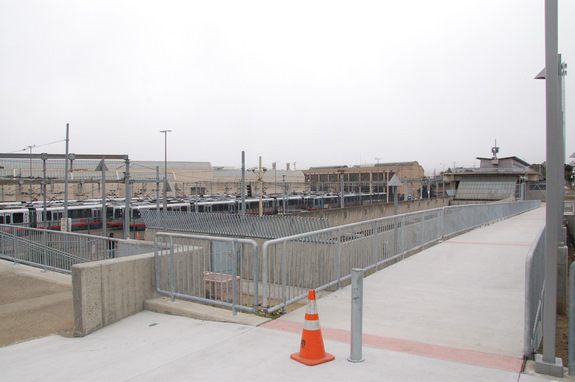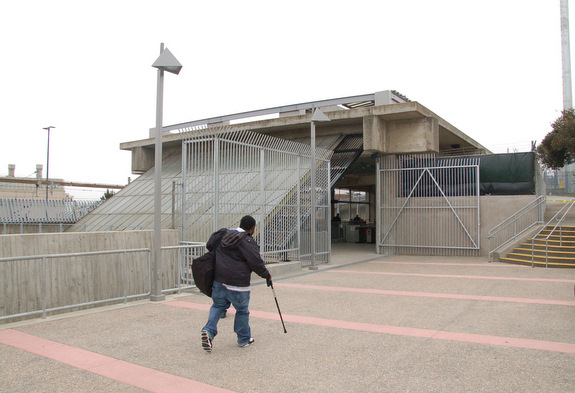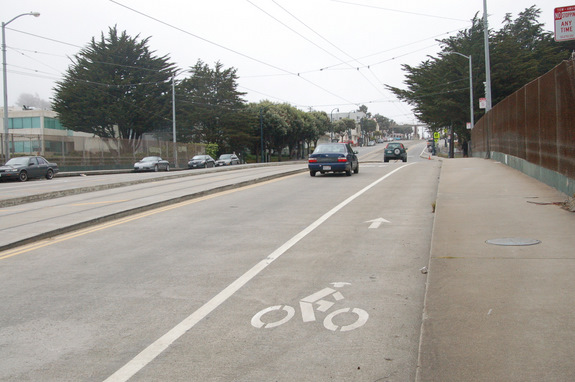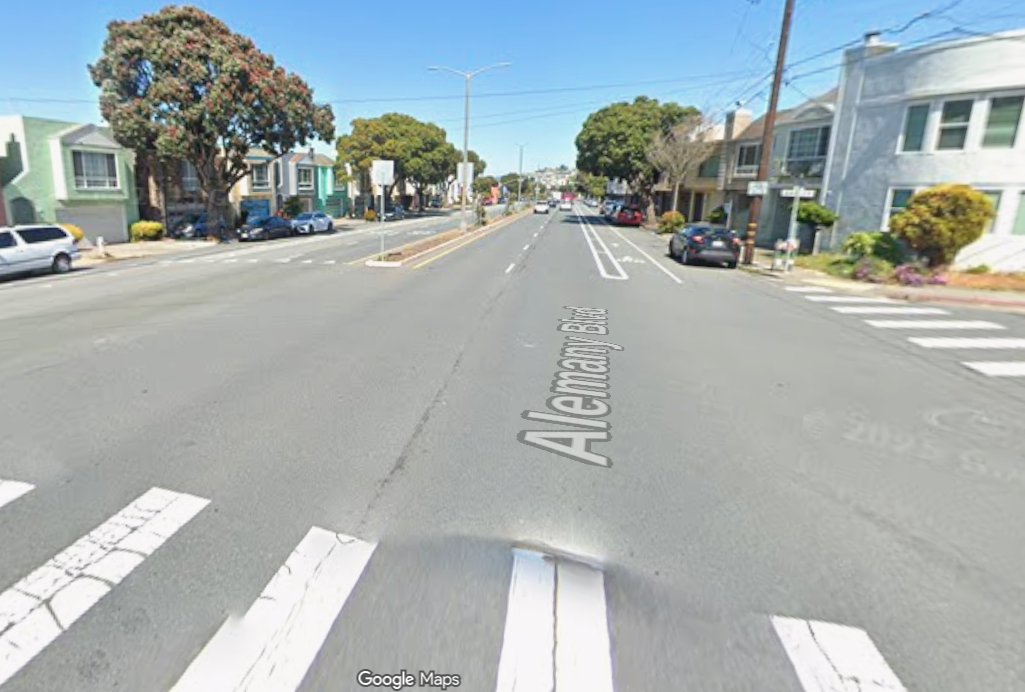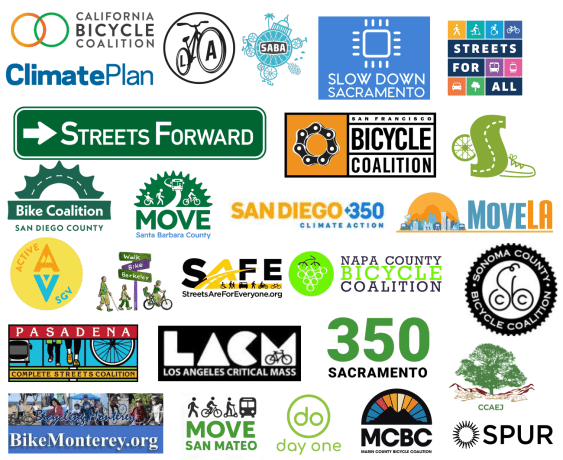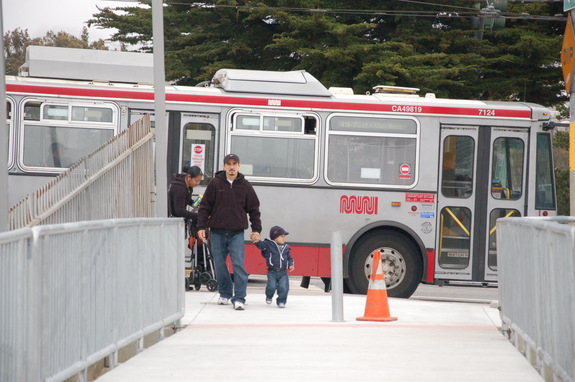
BART riders will no longer be squeezed alongside Muni tracks to get into Balboa Park Station. A new walkway connecting travelers to Ocean Avenue on the north side was unveiled Friday as one project in a host of efforts aimed at improving access to the busiest BART and Muni transit hub outside of the city's downtown area, though it may be just a baby step in the eyes of some advocates.
"For nearly four decades, we did not have a proper entrance to Ocean Avenue from the station for folks going to City College, or to the Ocean Avenue shopping district, or to Balboa Park," said BART Director Tom Radulovich. "Now we have a fully-accessible, direct entrance, which is great. I'm happy it's there."
The walkway is a welcome improvement to commuters using the station to and from Ocean Avenue who previously had no choice but to squeeze through a narrow passage alongside trains or circumnavigate the station to get inside.
"When the trains are actually running and they go past you, it's a little dangerous," said Jocelyn, a BART rider who lives in the neighborhood. "Now it's a lot easier and safer, I feel."
Erika, Jocelyn's friend, said she regularly uses the station to visit her from Berkeley. "I think it's great if you come home late, because it's all lit up," said Erika. "I feel a little bit safer up here where people can see me."
Balboa Park Station serves at least 12,000 passengers per day as a key hub for BART trains as well as Muni's J, K, and M Metro lines and seven other buses, all while doing duty as a major Muni maintenance facility.
The new walkway helps link cycling commuters to the bike lanes on Ocean Avenue, which have served as a more comfortable connection to City College of San Francisco and the Ingleside district since they went in late last year.
"This is definitely going to be a lot easier for me riding my bike to the station than having to go down that gravel path to the other side," noted Jocelyn.
Although the improvement helps solve some issues for BART passengers connecting to the 49 bus or other destinations north of the station, Balboa Park's original planning seems wrought with fundamental oversights in safety and access. Pushed right up against the 280 freeway, the pedestrian-heavy area is surrounded by dangerous roads swarmed with car traffic from four nearby ramps.
"Crossing Geneva, crossing San Jose, is a real challenge. You put your life in your hands," said District 11 Supervisor John Avalos, who noted the particular difficulty for those with wheelchairs and strollers in the largely working-class neighborhood.
With significant changes, the station has the potential to be the center of a neighborhood transit village. However, some advocates and city officials say it has a long way to go.
"It's an embarrassment," said Avalos, who brought the issue of the poor state of the station to the forefront at a January Board of Supervisors meeting. "It's an embarrassment for the entire city that this is something that the people who live in the backbone of San Francisco - the Excelsior, Visitacion Valley, [Ingleside, and Sunnyside] - have to put up with the most uncomfortable transit operation that we have."
Dangerous traffic conditions on the streets surrounding the station, as well as heavy industrial uses, cut it off from the rest of the area, says Radulovich, creating a "hole in the donut" of otherwise rich neighborhoods.

"It's a disaster on a number of levels," he said. "We located this intermodal transit station in the middle of a freeway interchange and in the middle of a Muni maintenance facility. Hopefully the lesson we've learned is those are three uses that don't go well together."
Lessening the impacts of the freeway ramps is one of the key issues in improving the station, said Radulovich, "but to solve the really big problems, we need to engage Caltrans and Muni, and that's been really challenging."
"Everyone's crossing their fingers in different directions," said Avalos, who highlighted that the SFMTA recognizes the station primarily as a maintenance facility, not a transit hub.
"They want to look at it as a place to store vehicles that they might need to store 15, 20 years from now," he said. "That makes it very difficult to deal with how buses and pedestrians are constrained to the actual use of Balboa Park Station."
"That is not the way we need to be working collaboratively on land-use issues and transit-oriented development in San Francisco," added Avalos.

Dysfunction in agency priorities and coordination seems to be the biggest obstacle to implementing the The Balboa Park Area Plan, a vision developed by the SF Planning Department in collaboration with the local community. It calls for the Balboa Park Station to become the hub of a connected, lively transit village and was adopted by the Board of Supervisors in 2009.
The plan aspires to fill in the "donut" in the area by improving the quality of place around the station, illustrating ideas as bold as building a deck of buildings and public space over the freeway that would remove physical barriers and better connect the two sides it currently divides.
But for now, even simple pedestrian safety improvements remain difficult to implement. At the end of the new west side walkway, there isn't a single crosswalk on Ocean Avenue, although Radulovich said the SFMTA has funding from the Safe Routes to Transit program to install them.
The next project lined up for the station is an east side walkway that would connect the Muni boarding area with the new one, which is only accessible by entering BART fare gates. Radulovich said construction on that is hoped to begin early next year.
Until then, Muni riders coming from the north side must still walk the gauntlet.
